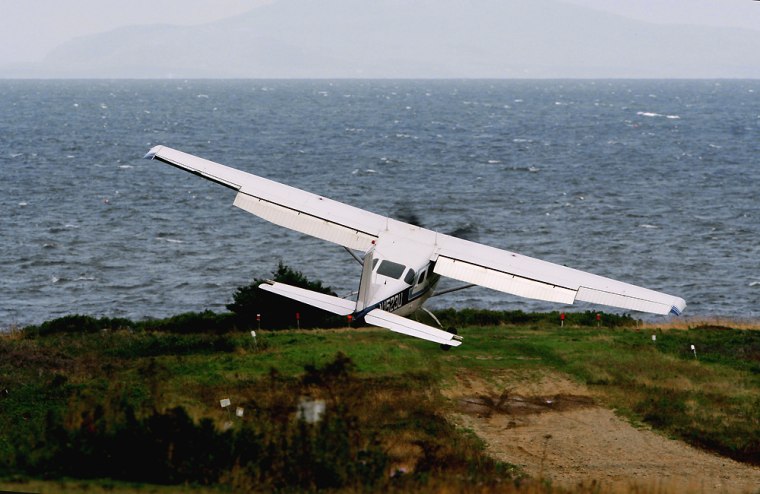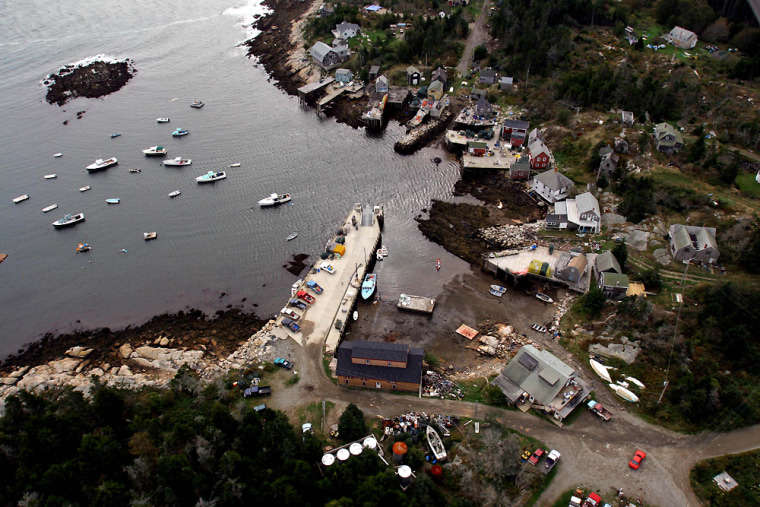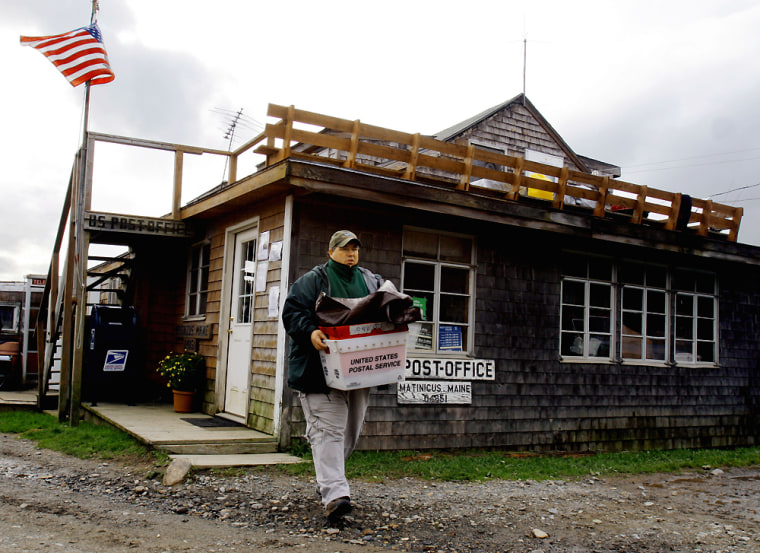With cartons of groceries and mail, cases of soda and boxes of computer equipment neatly stowed behind the seats of his Cessna 206, pilot Kevin Waters fires up the engine and proceeds down the runway.
Soon, the plane is soaring above trees that show tinges of their bright fall hues, and over rocky shores and harbors dotted with lobster boats and buoys. Then the small plane angles southeast above a cottony layer of clouds toward the island of Matinicus, 17 miles out to sea.
With three planes and a team of four fulltime pilots, Waters’ Penobscot Island Air provides a year-round lifeline between the mainland and some of Maine’s most remote islands. In addition to bringing food and mail, they fly 120 medical evacuations a year.
They bring in nurses and therapists for older and ailing islanders, contractors who are needed at once and can’t wait for slower or infrequent ferry boats, and others who need a quick lift for business, recreational or personal reasons — such as missing a ferry ride.

Actor John Travolta, a pilot himself, hitches a ride from time to time to Islesboro Island, where he has a home. Families of Fortune 500 company executives who have island homes get hops with Waters’ service to and from larger airports in the state. One islander flies her dog to the mainland to get its nails clipped.
While wealthy estate owners make up much of the summer business, it’s the lobstermen and local business owners who comprise the bulk of the wintertime traffic, Waters said from the service’s home base at the Knox County Airport in the coastal town of Owl’s Head, about an hour’s drive from Augusta.
“It’s a mission-oriented business,” said Waters, who worked as a bush pilot in Alaska for one of the 30 years he’s been flying. “It’s the closest thing that we have in the Lower 48 for this type of mission.”
Ferries, too, but air service critical
The islanders aren’t dependent solely on Penobscot air, which Waters sees as an alternative service that’s found its niche. The islands are still served by a patchwork of state-operated ferries and private boats for necessities of life.
And sometimes the weather, which can be harsh and fickle offshore, shows a preference for the old methods. While the sun baked away a morning fog on a recent fall day, it lingered stubbornly offshore, keeping Waters from landing on Matinicus and forcing him to move on toward two other islands — North Haven and Vinalhaven — to check on weather conditions there.
Still, islanders have grown to depend on the Penobscot planes.
On Matinicus, the 65 or so year-round residents get many of their goods by mail order, and some prefer traditional mail service to the Internet, said Wanda Philbrook, postmaster on the 2.6 square-mile island of traditional clapboard New England-style homes, lobster shacks — a place where license plates are not seen on vehicles.
Ferries stop only three or four times a month in the summer and once a month the rest of the year, so mail service would be irregular at best without the planes, said Philbrook. “We’d be in a real hard spot,” she added.
More than 1,100 islands
“We’ve got the one-room schoolhouse and the mail” to hold the lobster-fishing community together, said Philbrook. “If we didn’t have the mail we’d probably have to turn our tails and go back to the mainland.”
Maine’s coast is dotted by more than 1,100 islands, some of which were settled more than two centuries ago. They have colorful names that often reflect their past: Pound of Tea, Junk of Pork, Eastern Ear, the Hypocrites, the Cockolds, Despair and Bum Key. There are 13 Sheep Islands, 15 Bar Islands and six Thrumcaps. At Mount Desert, you’ll find the cruise ship stop Bar Harbor and Acadia National Park.
About a dozen of the islands are inhabited year-round.

Penobscot Island Air flies to eight of them, which have a combined year-round population of fewer than 4,000, in a pair of six-seaters and one seven-seat plane. In addition to being a licensed air ambulance service, the small airline flies for government agencies that do wildlife monitoring — taking seal and eagle counts. And it has contracts with cargo carriers UPS and FedEX.
Kathleen Colton depends upon UPS and the postal service to keep her design scarf business based on Matinicus, where she lives with her artist husband. Her business, Kathleen Designs, must get velvet and other fabrics shipped from California in order to turn out 2,000 to 3,000 scarves a year for its customers.
Everyone pitches in
Because Penobscot air has the islands’ postal and UPS contracts, “they’re critical,” said Colton. Without Waters’ air service, “I could figure out some way, but it would probably be cost prohibitive,” she said. “He covers all the bases.”
The service is as versatile as it is informal. Pilots — some retired commercial fliers and some who’ve worked as bush pilots — load and unload planes themselves as they chat with customers.
Air transport to Maine’s islands started in the 1940s, with a succession of companies providing the service through the years.
Last December, a company called Maine Atlantic Aviation abruptly terminated service from Knox County Airport, citing losses of more than $100,000 from servicing the islands. Matinicus was especially hard hit because of the ferries’ light winter schedules.
Islanders, teaming up with a mainland business group, the nonprofit Island Institute, and elected officials, set out to restore air service. Matinicus residents alone raised more than $17,000 to get the enterprise off the ground, and Waters, a former Maine Atlantic pilot, launched Penobscot Air.
